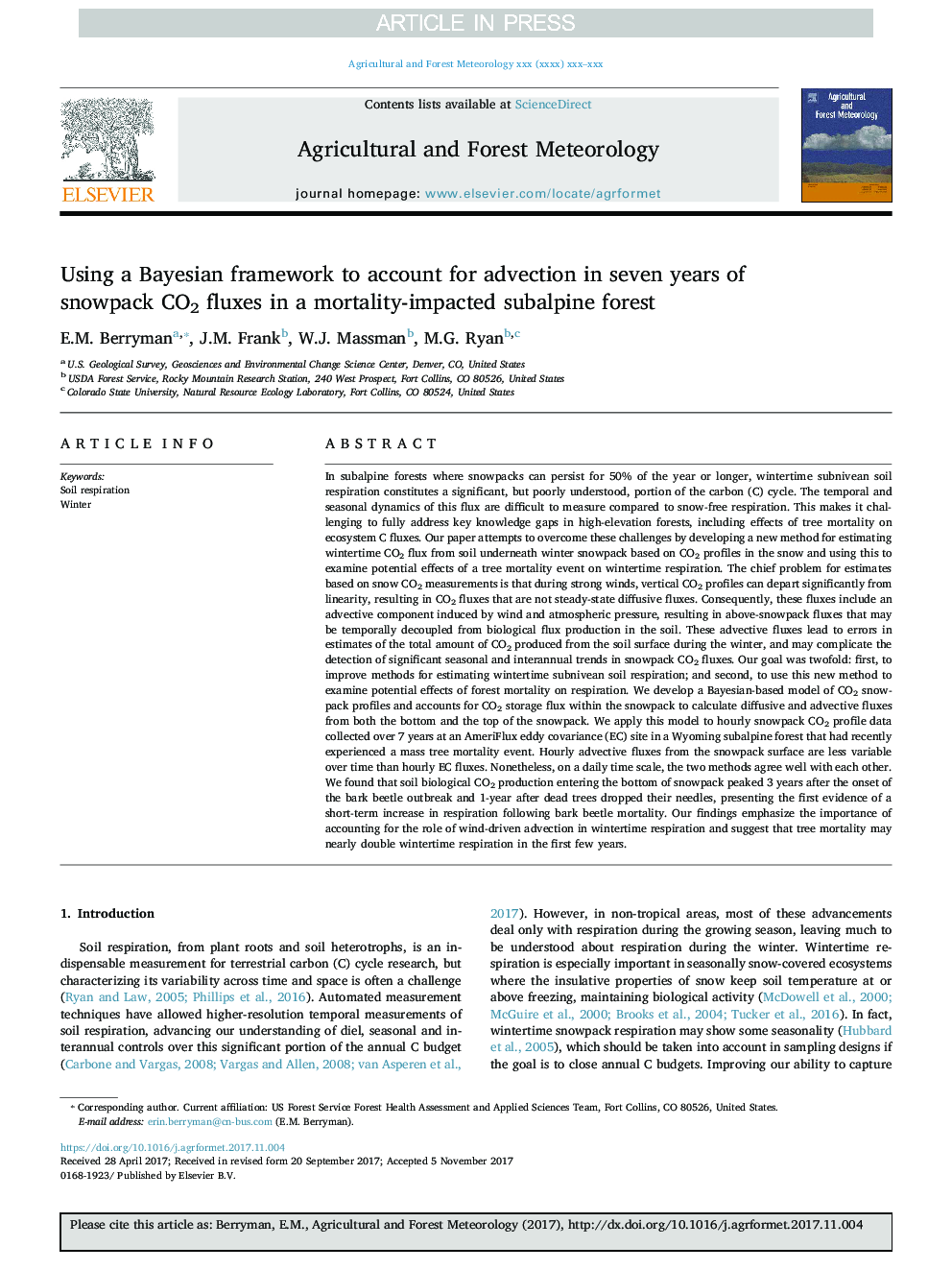| Article ID | Journal | Published Year | Pages | File Type |
|---|---|---|---|---|
| 6536861 | Agricultural and Forest Meteorology | 2018 | 14 Pages |
Abstract
In subalpine forests where snowpacks can persist for 50% of the year or longer, wintertime subnivean soil respiration constitutes a significant, but poorly understood, portion of the carbon (C) cycle. The temporal and seasonal dynamics of this flux are difficult to measure compared to snow-free respiration. This makes it challenging to fully address key knowledge gaps in high-elevation forests, including effects of tree mortality on ecosystem C fluxes. Our paper attempts to overcome these challenges by developing a new method for estimating wintertime CO2 flux from soil underneath winter snowpack based on CO2 profiles in the snow and using this to examine potential effects of a tree mortality event on wintertime respiration. The chief problem for estimates based on snow CO2 measurements is that during strong winds, vertical CO2 profiles can depart significantly from linearity, resulting in CO2 fluxes that are not steady-state diffusive fluxes. Consequently, these fluxes include an advective component induced by wind and atmospheric pressure, resulting in above-snowpack fluxes that may be temporally decoupled from biological flux production in the soil. These advective fluxes lead to errors in estimates of the total amount of CO2 produced from the soil surface during the winter, and may complicate the detection of significant seasonal and interannual trends in snowpack CO2 fluxes. Our goal was twofold: first, to improve methods for estimating wintertime subnivean soil respiration; and second, to use this new method to examine potential effects of forest mortality on respiration. We develop a Bayesian-based model of CO2 snowpack profiles and accounts for CO2 storage flux within the snowpack to calculate diffusive and advective fluxes from both the bottom and the top of the snowpack. We apply this model to hourly snowpack CO2 profile data collected over 7 years at an AmeriFlux eddy covariance (EC) site in a Wyoming subalpine forest that had recently experienced a mass tree mortality event. Hourly advective fluxes from the snowpack surface are less variable over time than hourly EC fluxes. Nonetheless, on a daily time scale, the two methods agree well with each other. We found that soil biological CO2 production entering the bottom of snowpack peaked 3 years after the onset of the bark beetle outbreak and 1-year after dead trees dropped their needles, presenting the first evidence of a short-term increase in respiration following bark beetle mortality. Our findings emphasize the importance of accounting for the role of wind-driven advection in wintertime respiration and suggest that tree mortality may nearly double wintertime respiration in the first few years.
Keywords
Related Topics
Physical Sciences and Engineering
Earth and Planetary Sciences
Atmospheric Science
Authors
E.M. Berryman, J.M. Frank, W.J. Massman, M.G. Ryan,
